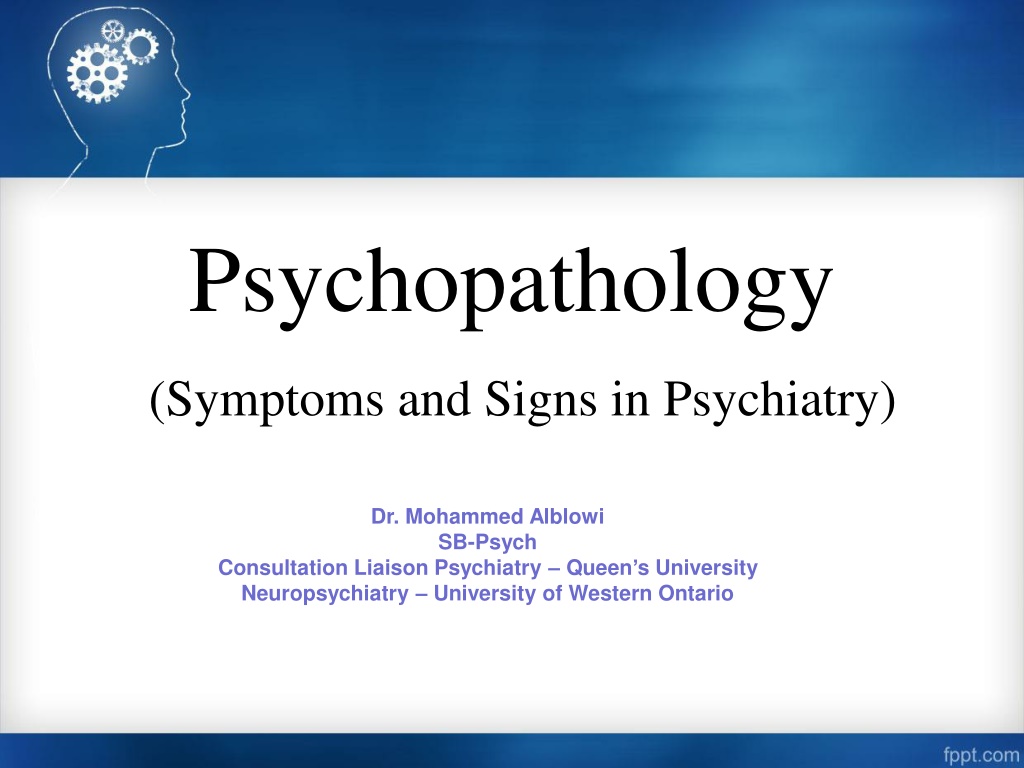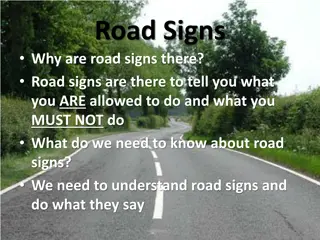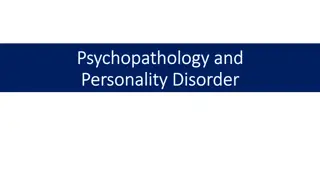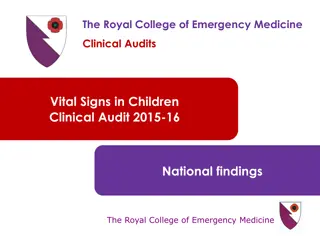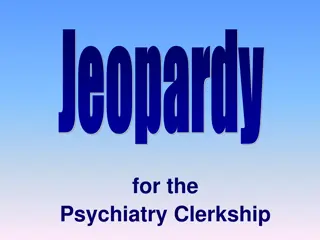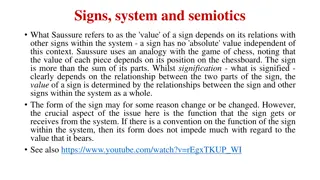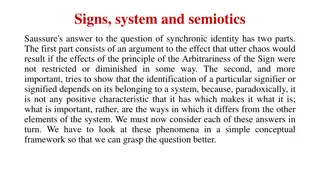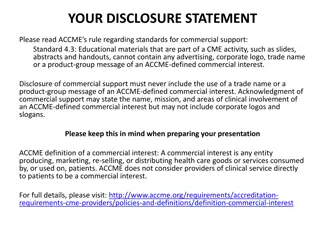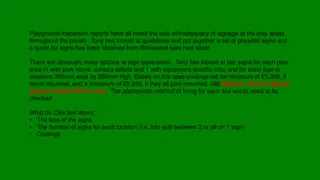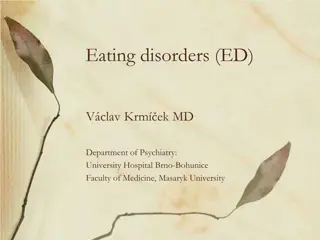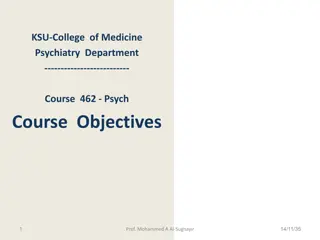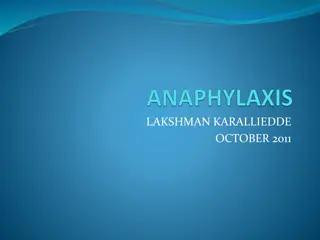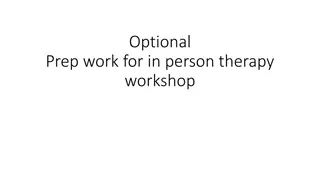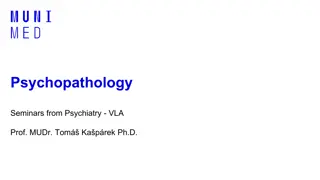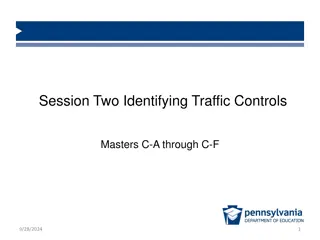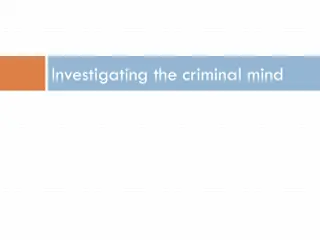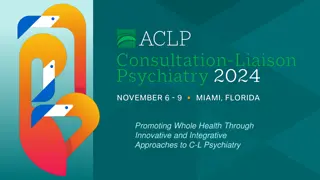Understanding Psychopathology: Symptoms and Signs in Psychiatry
Psychopathology involves the study of symptoms and signs in psychiatry, where signs are objective observations and symptoms are subjective experiences. Mental disorders encompass a range of issues affecting thoughts, emotions, behaviors, and relationships. Recognizing signs and symptoms such as sleep or appetite changes, mood swings, withdrawal, and impaired functioning is crucial in identifying and addressing mental health concerns. Additional manifestations may include problems with thinking, illogical beliefs, nervousness, and unusual behaviors, all of which can impact an individual's overall well-being and functioning.
Download Presentation

Please find below an Image/Link to download the presentation.
The content on the website is provided AS IS for your information and personal use only. It may not be sold, licensed, or shared on other websites without obtaining consent from the author. Download presentation by click this link. If you encounter any issues during the download, it is possible that the publisher has removed the file from their server.
E N D
Presentation Transcript
Psychopathology (Symptoms and Signs in Psychiatry) Dr. Mohammed Alblowi SB-Psych Consultation Liaison Psychiatry Queen s University Neuropsychiatry University of Western Ontario
Objectives To define symptom and sign. To describe the positive and negative features in psychiatry. To describe symptoms and signs in psychiatry.
Sign Vs Symptoms Signs are objective; symptoms are subjective Signs are the clinician's observations Symptoms are subjective experiences In psychiatry, signs and symptoms are not as clearly demarcated as in other fields of medicine; they often overlap. Disorders in psychiatry are often described as syndromes.
Mental Disorder Comprise a broad range of problems. Characterized by some combination of abnormal thoughts, emotions, behavior and relationships with others. Mental illnesses are associated with distress and/or problems functioning in social, work or family activities.
Sign & symptoms Sleep or appetite changes. Mood changes. Withdrawal Recent social withdrawal and loss of interest in activities previously enjoyed Impairment in functioning An unusual drop in functioning, at school, work or social activities, such as quitting sports, failing in school or difficulty performing familiar tasks
Cont Problems thinking Problems with concentration, memory or logical thought and speech that are hard to explain Increased sensitivity Heightened sensitivity to sights, sounds, smells or touch; avoidance of over-stimulating situations Apathy Loss of initiative or desire to participate in any activity. Feeling disconnected A vague feeling of being disconnected from oneself or one s surroundings; a sense of unreality
Cont Illogical thinking Unusual or exaggerated beliefs about personal powers to understand meanings or influence events; illogical or magical thinking typical of childhood in an adult Nervousness Fear or suspiciousness of others or a strong nervous feeling Unusual behavior Odd, uncharacteristic, peculiar behavior
Facts about sign and symptoms Could be part of illness. (e.g paranoid delusion, auditory hallucination..etc) Part of mental status (e.g circumstantiality, restless .. etc) Description of type of the illness or prominent feature ( schizophrenia with positive or negative feature)
POSITIVE vs NEGATIVE FEATURES Positive features Major disturbances in : perception e.g. hallucination. Negative features Poverty of thoughts & speech. Lack of ambition, interest & initiation. Thinking e.g. delusions. Restricted affect. Mood e.g. extreme euphoria. Self-neglect. Behavior e.g. violence Poor self care & hygiene
Mood Vs Affect Mood Affect The long term feeling state through which all experience are filtered. the visible and audible manifestations of the patents emotional response to external and internal events . The emotional foreground the emotional background Last days to weeks. Momentary , seconds to hours. Changes spontaneously, not related to internal or external stimuli. Symptom (ask patient) Changes according to internal & external stimuli, observed by others (sign)(Current emotional state)
Mood & Affect Euthymia Normal range of mood, implying absence of depressed or elevated mood. Depression Psychopathological feeling of sadness. Anhedonia Loss of interest in, and withdrawal from, all regular and pleasurable activities. Often associated with depression.
Mood & Affect Elation Feelings of joy, euphoria, triumph, and intense self- satisfaction or optimism. Elevated mood Air of confidence and enjoyment; a mood more cheerful than normal but not necessarily pathological. Euphoria Exaggerated feeling of well-being that is inappropriate to real events. Expansive mood Expression of feelings without restraint, frequently with an overestimation of their significance or importance.
Mood & Affect Anxiety Feeling of apprehension caused by anticipation of danger, which may be internal or external. Agitation Severe anxiety associated with motor restlessness. Flat affect Little to no display of emotion
If you won 1 million $, your reaction will be:
Thought: form & content Form Vs. content Types of Formal thought disorders: Flight of ideas Rapid, continuous verbalizations or plays on words produce constant shifting from one idea to another Loosening of associations Flow of thought in which ideas from one subject to another in a completely unrelated way Circumstantiality Indirect speech that is delayed in reaching the point but eventually gets from original point to desired goal Tangentiality the train of thought of the speaker wanders and shows a lack of focus, never returning to the initial topic of the conversation
Thought: form & content Derailment Gradual or sudden deviation in train of thought without blocking Blocking Abrupt interruption in the train of thinking before a thought or an idea is finished Incoherence Communication that is disconnected, disorganized, or incomprehensible. Word salad Incoherent, essentially incomprehensible, mixture of words and phrases
Content of thought Poverty Delusion Overvalued idea Preoccupation Obsession Compulsion Suicidal ideation Homicidal ideations
Content of thought Obsession Persistent and recurrent idea, image, or impulse that cannot be eliminated from consciousness by logic or reasoning Compulsion Pathological need to act on an impulse that, if resisted, produces anxiety; repetitive behavior in response to an obsession or performed according to certain rules, with no true end in itself other than to prevent something from occurring in the future.
Content of thought Preoccupation of thought Centering of thought content on a particular idea, associated with a strong affective tone, such as a paranoid trend or a suicidal or homicidal preoccupation Overvalued idea False or unreasonable belief or idea that is sustained beyond the bounds of reason. It is held with less intensity or duration than a delusion, but is usually associated with mental illness
Content of thought Delusion: False belief, based on incorrect inference about external reality, that is firmly held despite objective and obvious contradictory proof or evidence and despite the fact that other members of the culture do not share the belief. Delusion of control Delusion of grandeur Delusion of infidelity Delusion of persecution Delusion of reference Somatic delusion Nihilistic delusion
Delusion Passivity Phenomena Thought insertion Delusion that thoughts are being implanted in one's mind by other people or forces. Thought withdrawal Delusion that one's thoughts are being removed from one's mind by other people or forces. Thought broadcasting Delusion that one's thoughts are being broadcast or projected into the environment.
Overvalued idea Preoccupation Delusion
Perception Conscious awareness of elements in the environment by the mental processing of sensory stimuli Hallucination False sensory perception occurring in the absence of any relevant external stimulation of the sensory modality involved Auditory, visual, olfactory, gustatory, tactile. Illusion Perceptual misinterpretation of a real external stimulus.
